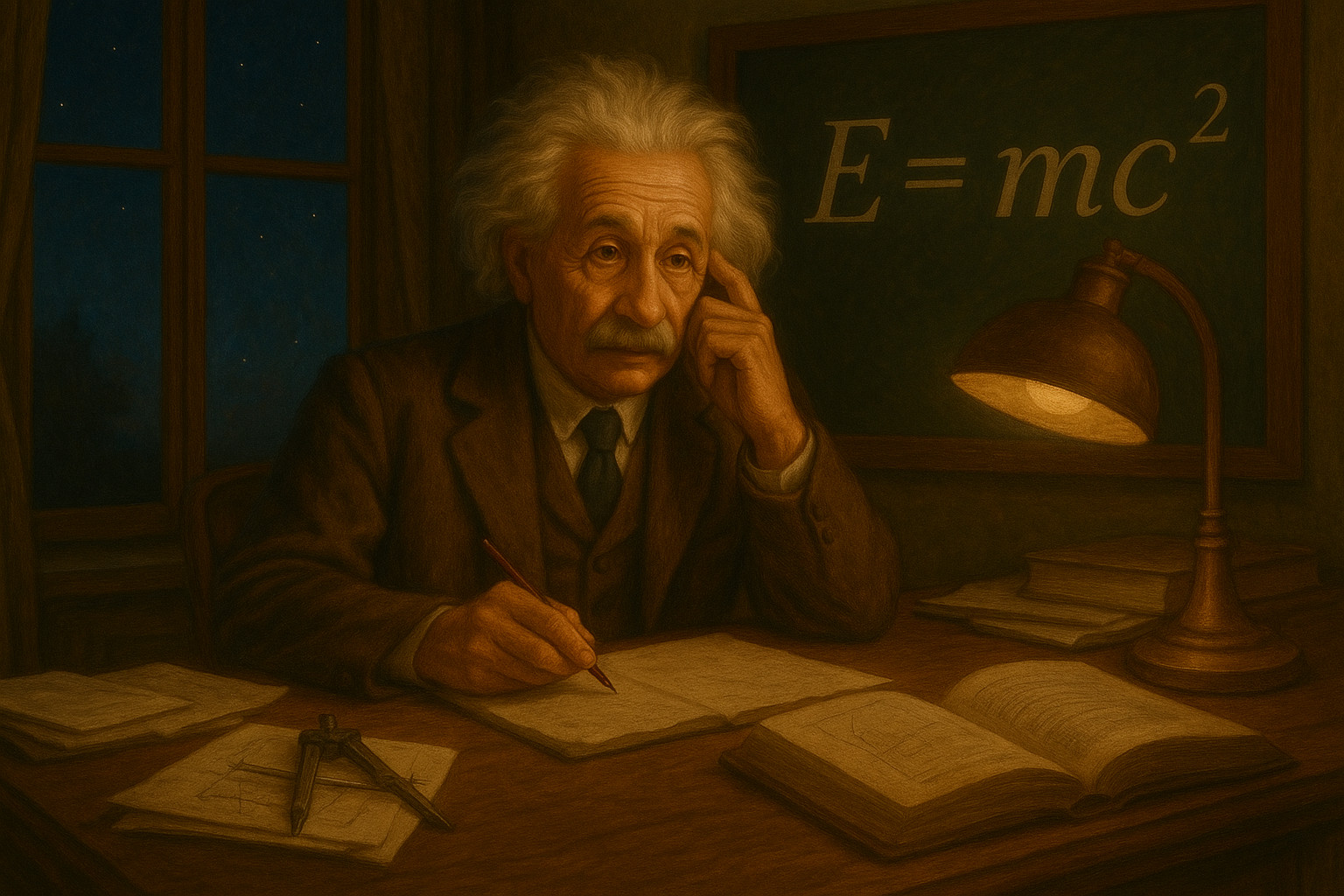
Albert Einstein, a name synonymous with genius, dared to think differently about the world. Born in 1879 in Ulm, Germany, Einstein’s curiosity knew no bounds. He possessed a unique ability to visualize complex problems in simple ways, and his imaginative thought experiments ultimately reframed our understanding of time and space. But how did he come to these groundbreaking ideas? Let’s explore.
Early Influences: Seeds of Curiosity
Einstein’s fascination with science began early. At the age of five, he was shown a compass by his father, Hermann. The invisible force moving the needle captivated young Albert. How could an unseen power direct something so tangible? This encounter ignited a lifelong passion for uncovering the mysteries of the world.
- Born in Ulm, Germany, 1879
- Encountered a compass at age 5
- Developed an early interest in mathematics and physics
Interestingly, his education journey wasn’t smooth. Many people believe genius is innate, but Einstein was a late talker and faced academic challenges. Despite this, his family supported his inquisitiveness, fostering an environment where questioning was encouraged. As time went on, his self-driven study habits honed his analytical skills, laying the groundwork for his revolutionary ideas.
Mental Models: Imagining the Impossible
Einstein’s strength lay in his ability to conceptualize problems mentally. He once asked himself, “What would it be like to ride alongside a beam of light?” Such thought experiments were crucial. They allowed Einstein to explore scenarios beyond the reach of traditional scientific methods, propelling him toward the theory of relativity.
- Introduced the concept of riding a light beam
- Pioneered the theory of relativity based on mental experiments
- Published the special theory of relativity in 1905
Of course, these mental models were not mere flights of fancy. They were rigorous exercises in imagination that reflected real-world physics. By daring to think the unthinkable, Einstein dismantled the classical Newtonian view, offering instead a universe where time and space were intertwined, relative, and dynamic.
Challenges & Resilience: Overcoming Obstacles
Einstein’s journey wasn’t without hurdles. Initially, his ideas about relativity faced skepticism from the scientific community. What does it mean when the world says you’re wrong? For Einstein, it meant perseverance. He meticulously gathered evidence and debated his theories against established norms.
- Faced skepticism from peers
- Utilized patience and persistence to validate his theories
- Gained recognition with the solar eclipse of 1919
It was the solar eclipse of 1919 that turned the tide. Observations confirmed that light bends in a gravitational field, as Einstein predicted. This triumph was a testament to his resilience and ability to confront challenges with an open yet determined mind.
Legacy: The Lasting Impact of a Visionary
Einstein’s work didn’t just change physics; it transformed how we understand the universe. His theories of relativity opened new vistas for astronomy, quantum mechanics, and even philosophy, challenging the very fabric of reality.
- Revolutionized physics with his theories
- Influenced diverse fields beyond physics
- Inspired future generations of scientists and thinkers
No wonder Einstein remains a cultural icon. His intellectual legacy—marked by curiosity, courage, and creativity—continues to inspire. As we unravel the mysteries of the cosmos, his thought experiments serve as a powerful reminder of the potential within each of us to change the world.
Fuel Someone Else’s Curiosity
Like Einstein, we all have the potential to see the world with new eyes. Share this story and spark a fresh wave of curiosity in someone else’s mind. After all, inspiration is a gift best shared. Encourage others to explore, question, and imagine the impossible—just as Einstein did.

Leave a Reply